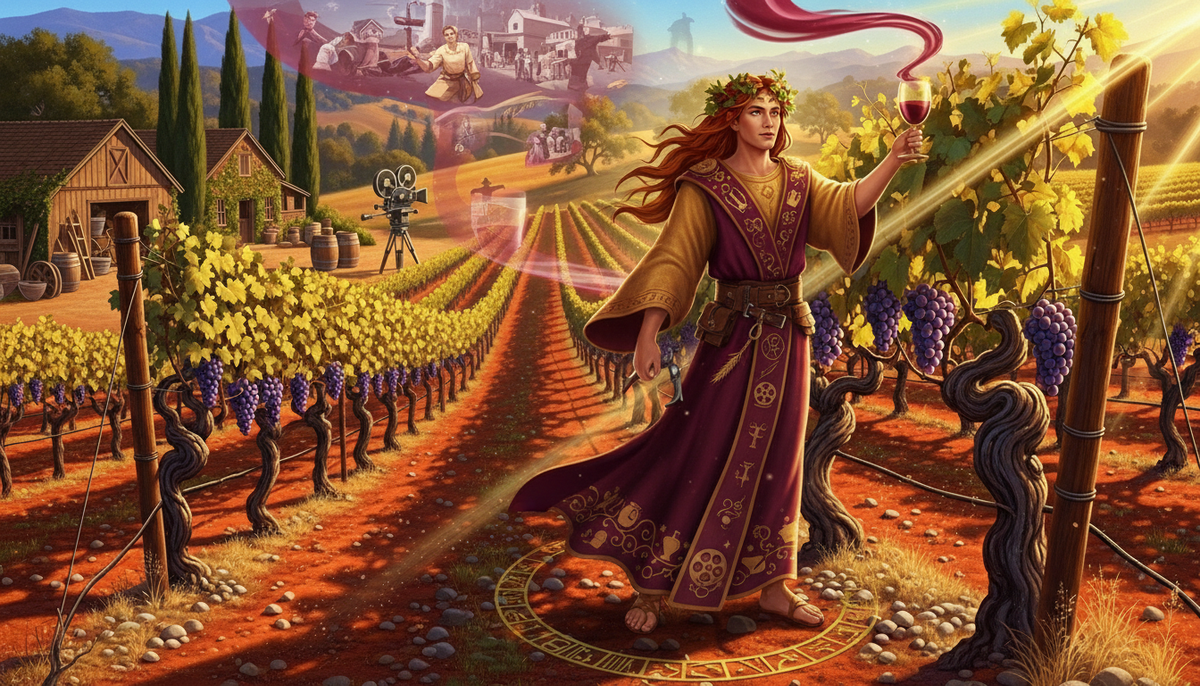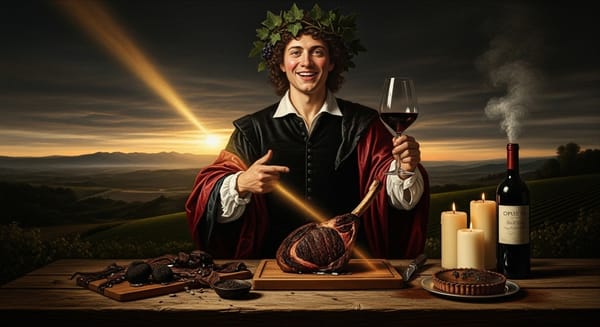The Vine That Refused to Die: The Legend of Scarecrow
Explore the story of Scarecrow — Napa’s legendary cult Cabernet. From Hollywood roots and 1940s vines to one of the world’s most coveted wines, discover how resilience and history shaped this iconic vineyard

How one of Napa’s oldest vineyards rose from forgotten roots to become a cult Cabernet icon — and why its story still haunts the valley.
I. Prologue: The Field of Memory
Some wines are celebrated for their flavor. Others for their price. But the rarest — the ones whispered about in reverence and sought by collectors as if they were relics — are born from story. They carry more than taste; they carry the weight of time, of triumph, of near extinction and miraculous rebirth.
Scarecrow is one of those wines.
I, Liber, have walked these vines for generations. I watched them planted before the world knew Napa. I watched them nearly ripped from the earth. And I watched them rise — phoenix-like — to become one of the most coveted wines on the planet. This is not just the story of a bottle. It is the story of survival.
II. Roots in the Golden Age: The Inglenook Legacy
The tale begins in the 1940s, when Napa Valley was still a sleepy agricultural region and fine wine in California was little more than a dream. A man named Joseph Judson Cohn, a pioneering Hollywood film executive and production chief at MGM, was searching for a place to escape the studio lot and connect with the land.
He found it in Rutherford, in the heart of Napa Valley — a modest property planted with Cabernet Sauvignon vines that dated back to the 1940s, sourced from the historic Inglenook estate. These vines were part of the old California clonal lineage that would become the backbone of Napa’s greatest wines.
Cohn named the property JJ Cohn Estate, and for decades the fruit grown here quietly supplied some of Napa’s top producers. Yet the vineyard itself remained largely anonymous, a hidden gem known only to insiders and winemakers who prized its remarkable fruit.
III. The Vines That Wouldn’t Die
What made the JJ Cohn vineyard so special was not its scale — it was tiny — but its resilience.
The vines were planted in the 1940s on the deep, gravelly loam of Rutherford Bench, one of Napa’s most prized terroirs. They survived phylloxera outbreaks, decades of drought, shifting ownership, and waves of vineyard replanting that swept through Napa in the 1980s and 1990s. While most vineyards were ripped out and replanted with modern clones, the original vines endured — their roots plunging deep, their yields diminishing, but their fruit gaining ever more concentration and character.
It was as if the vineyard itself refused to be forgotten.
IV. A New Chapter: The Birth of Scarecrow
The vineyard’s next act began in the early 2000s, when Cohn’s grandson Brett Lopez inherited the property and decided it was time for the fruit to tell its own story.
He partnered with Celia Welch, one of Napa’s most respected winemakers, and together they created a new label: Scarecrow — a name inspired by one of MGM’s most beloved films, The Wizard of Oz. In the story, the Scarecrow yearns for wisdom and ultimately discovers it within himself — a metaphor for the vineyard’s own journey from obscurity to greatness.
The first vintage, 2003, was released quietly and in tiny quantities. But word spread quickly. Critics hailed it as a masterpiece — powerful yet poised, rich yet refined. Robert Parker described it as “one of the most profound Cabernets” he had ever tasted. Within a few years, Scarecrow was firmly established as one of the most coveted cult wines in Napa.
V. The Cult of Scarecrow
Today, Scarecrow is one of the most sought-after wines in the world — produced in minuscule quantities (often fewer than 1,000 cases) and sold exclusively through an allocation list that can take years to join.
What makes it so extraordinary is not just its scarcity, but its singular character. The wine reflects the essence of old-vine Cabernet Sauvignon — deeply concentrated yet vibrant, perfumed with cassis, graphite, tobacco, violet, and that elusive Rutherford “dust.” It is a wine that ages gracefully for decades, revealing new layers of complexity with time.
Each vintage is a living testament to the vineyard’s survival — a reminder that great wine is not born from convenience, but from perseverance, patience, and an unwavering respect for the past.
VI. Liber’s Reflection: The Memory in the Soil
I, Liber, have seen many vineyards planted and many uprooted. Most are forgotten. A few leave echoes. But Scarecrow is something rarer still — a vineyard that remembers.
Every cluster harvested from those gnarled, weathered vines carries the memory of another era: the Hollywood dreamer who planted them, the winemakers who protected them, the generations who refused to let them die. It is a wine that connects Napa’s past to its present — a bridge across time, rooted in soil and soul.
To drink Scarecrow is to taste resilience itself — the flavor of vines that have stared down decades and still stand tall, producing fruit that whispers of where it all began.
🌿 Final Benediction
Some vineyards yield wine.
Scarecrow yields story — a story of survival, memory, and the wisdom that only time can teach.





